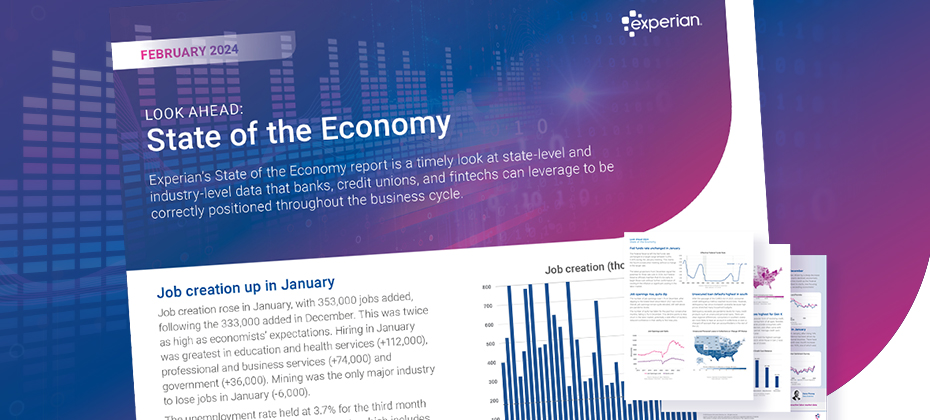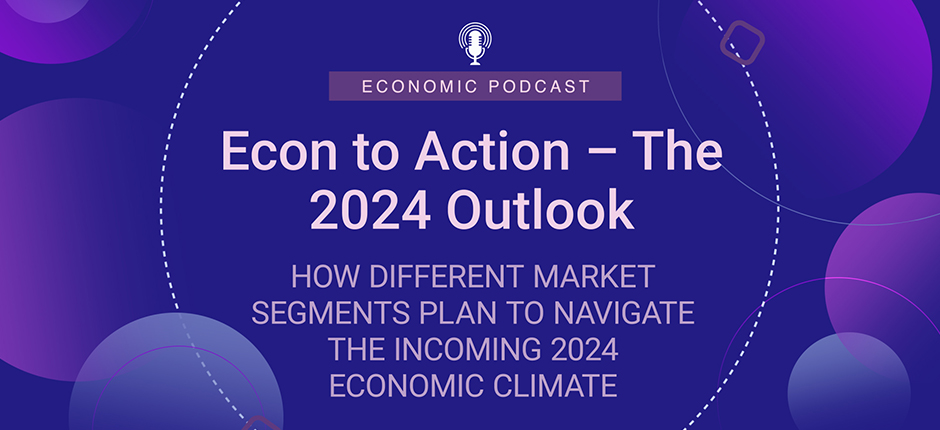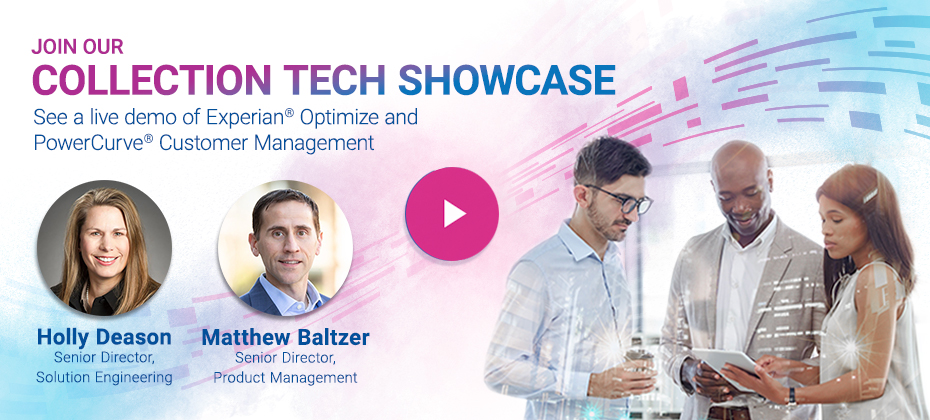Topics

In the ever-expanding financial crime landscape, envision the most recent perpetrator targeting your organization. Did you catch them? Could you recover the stolen funds? Now, picture that same individual attempting to replicate their scheme at another establishment, only to be thwarted by an advanced system flagging their activity. The reason? Both companies are part of an anti-fraud data consortium, safeguarding financial institutions (FIs) from recurring fraud. In the relentless battle against fraud and financial crime, FIs find themselves at a significant disadvantage due to stringent regulations governing their operations. Criminals, however, operate without boundaries, collaborating across jurisdictions and international borders. Recognizing the need to level the playing field, FIs are increasingly turning to collaborative solutions, such as participation in fraud consortiums, to enhance their anti-fraud and Anti-Money Laundering (AML) efforts. Understanding consortium data for fraud prevention A fraud consortium is a strategic alliance of financial institutions and service providers united in the common goal of comprehensively understanding and combatting fraud. As online transactions surge, so does the risk of fraudulent activities. However, according to Experian’s 2023 U.S. Identity and Fraud Report, 55% of U.S. consumers reported setting up a new account in the last six months despite concerns around fraud and online security. The highest account openings were reported for streaming services (43%), social media sites and applications (40%), and payment system providers (39%). Organizations grappling with fraud turn to consortium data as a robust defense mechanism against evolving fraud strategies. Consortium data for fraud prevention involves sharing transaction data and information among a coalition of similar businesses. This collaborative approach empowers companies with enhanced data analytics and insights, bolstering their ability to combat fraudulent activities effectively. The logic is simple: the more transaction data available for analysis by artificial-intelligence-powered systems, the more adept they become at detecting and preventing fraud by identifying patterns and anomalies. Advantages of data consortiums for fraud and AML teams Participation in an anti-fraud data consortium provides numerous advantages for a financial institution's risk management team. Key benefits include: Case management resolution: Members can exchange detailed case studies, sharing insights on how they responded to specific suspicious activities and financial crime incidents. This collaborative approach facilitates the development of best practices for incident handling. Perpetrator IDs: Identifying repeat offenders becomes more efficient as consortium members share data on suspicious activities. Recognizing patterns in names, addresses, device fingerprints, and other identifiers enables proactive prevention of financial crimes. Fraud trends: Consortium members can collectively analyze and share data on the frequency of various fraud attempts, allowing for the calibration of anti-fraud systems to effectively combat prevalent types of fraud. Regulatory changes: Staying ahead of evolving financial regulations is critical. Consortiums enable FIs to promptly share updates on regulatory changes, ensuring quick modifications to anti-fraud/AML systems for ongoing compliance. Who should join a fraud consortium? A fraud consortium can benefit any organization that faces fraud risks and challenges, especially in the financial industry. However, some organizations may benefit more, depending on their size, type, and fraud exposure. Some of the organizations that should consider joining a fraud consortium are: Financial institutions: Banks, credit unions, and other financial institutions are prime targets for fraudsters, who use various methods such as identity theft, account takeover, card fraud, wire fraud, and loan fraud to steal money and information from them. Fintech companies: Fintech companies are innovative and disruptive players in the financial industry, who offer new and alternative products and services such as digital payments, peer-to-peer lending, crowdfunding, and robot-advisors. Online merchants: Online merchants are vulnerable to fraudsters, who use various methods such as card-not-present fraud, friendly fraud, and chargeback fraud to exploit their online transactions and payment systems. Why partner with Experian? What companies need is a consortium that allows FIs to collaboratively research anti-fraud and AML information, eliminating the need for redundant individual efforts. This approach promotes tighter standardization of anti-crime procedures, expedited deployment of effective anti-fraud/AML solutions, and a proactive focus on preventing financial crime rather than reacting to its aftermath. Experian Hunter is a sophisticated global application fraud and risk management solution. It leverages detection rules to screen incoming application data for identifying and preventing fraudulent activities. It matches incoming application data against multiple internal and external data sources, shared fraud databases and dedicated watch lists. It uses client-flexible matching rules to crossmatch data sources for highlighting data anomalies and velocity attempts. In addition, it looks for connections to previous suspected and known fraudulent applications. Hunter generates a fraud score to indicate a fraud risk level used to prioritize referrals. Suspicious applications are moved into the case management tool for further investigation. Overall, Hunter prevents application fraud by highlighting suspicious applications, allowing you to investigate and prevent fraud without inconveniencing genuine customers. To learn more about our fraud management solutions, visit us online or request a call. Learn more This article includes content created by an AI language model and is intended to provide general information.

This article was updated on March 7, 2024. Like so many government agencies, the U.S. military is a source of many acronyms. Okay, maybe a few less, but there really is a host of abbreviations and acronyms attached to the military – and in the regulatory and compliance space, that includes SCRA and MLA. So, what is the difference between the two? And what do financial institutions need to know about them? Let’s break it down in this basic Q&A. SCRA and MLA: Who is covered and when are they covered? The Servicemember Civil Relief Act (SCRA) protects service members and their dependents (indirectly) on existing debts when the service member becomes active duty. In contrast, the Military Lending Act (MLA) protects service members, their spouses and/or covered dependents at point of origination if they are on active duty at that time. For example, if a service member opens an account with a financial institution and then becomes active military, SCRA protections will apply. On the other hand, if the service member is of active duty status when the service member or dependent is extended credit, then MLA protections will apply. Both SCRA and MLA protections cease to apply to a credit transaction when the service member ceases to be on active duty status. What is covered? MLA protections apply to all forms of payday loans, vehicle title loans, refund anticipation loans, deposit advance loans, installment loans, unsecured open-end lines of credit, and credit cards. However, MLA protections exclude loans secured by real estate and purchase-money loans, including a loan to finance the purchase of a vehicle. What are the interest rate limitations for SCRA and MLA? The SCRA caps interest rate charges, including late fees and other transaction fees, at 6 percent. The MLA limits interest rates and fees to 36 percent Military Annual Percentage Rate (MAPR). The MAPR is not just the interest rate on the loan, but also includes additional fees and charges including: Credit insurance premiums/fees Debt cancellation contract fees Debt suspension agreement fees and Fees associated with ancillary products. Although closed-end credit MAPR will be a one-time calculation, open-end credit transactions will need to be calculated for each covered billing cycle to affirm lender compliance with interest rate limitations. Are there any lender disclosure requirements? There is only one set of circumstances that triggers SCRA disclosures. The Department of Housing and Urban Development (HUD) requires that SCRA disclosures be provided by mortgage servicers on mortgages at 45 days of delinquency. This disclosure must be provided in written format only. For MLA compliance, financial institutions must provide the following disclosures: MAPR statement Payment obligation descriptions Other applicable Regulation Z disclosures. For MLA, it is also important to note that disclosures are required both orally and in a written format the borrower can keep. How Experian can help Experian's solutions help you comply with the Department of Defense's (DOD's) final amendment rule. We can access the DOD's database on your behalf to identify MLA-covered borrowers and provide a safe harbor for creditors ascertaining whether a consumer is covered by the final rule's protection. Visit us online to learn more about our SCRA and military lending act compliance solutions. Learn more

Finding a reliable, customer-friendly way to protect your business against new account fraud is vital to surviving in today's digital-driven economy. Not only can ignoring the problem cause you to lose valuable money and client goodwill, but implementing the wrong solutions can lead to onboarding issues that drive away potential customers. The Experian® 2023 Identity and Fraud Report revealed that nearly 70 percent of businesses reported fraud loss in recent years, with many of these involving new account fraud. At the same time, problems with onboarding caused 37 percent of consumers to drop off and take their business elsewhere. In other words, your customers want protection, but they aren't willing to compromise their digital experience to get it. You need to find a way to meet both these needs when combating new account fraud. What is new account fraud? New account fraud occurs any time a bad actor creates an account in your system utilizing a fake or stolen identity. This process is referred to by different names, such as account takeover fraud, account creation fraud, or account opening fraud. Examples of some of the more common types of new account fraud include: Synthetic identity (ID) fraud: This type of fraud occurs when the scammer uses a real, stolen credential combined with fake credentials. For example, they might use someone's real Social Security number combined with a fake email. Identity theft: In this case, the fraudster uses personal information they stole to create a new scam account. Fake identity: With this type of fraud, scammers create an account with wholly fake credentials that haven't been stolen from any particular person. New account fraud may target individuals, but the repercussions spill over to impact entire organizations. In fact, many scammers utilize bots to attempt to steal information or create fake accounts en masse, upping the stakes even more. How does new account fraud work? New account fraud begins at a single weak security point, such as: Data breaches: The Bureau of Justice reported that in 2021 alone, 12 percent of people ages 16 or older received notifications that their personal information was involved in a data breach.1 Phishing scams: The fraudster creates an email or social media account that pretends to be from a legitimate organization or person to gain confidential information.2 Skimmers: These are put on ATMs or fuel pumps to steal credit or debit card information.2 Bot scrapers: These tools scrape information posted publicly on social media or on websites.2 Synthetic ID fraud: 80 percent of new account fraud is linked to synthetic ID fraud.3 The scammer just needs one piece of legitimate information. If they have a real Social Security number, they might combine it with a fake name and birth date (or vice versa.) After the information is stolen, the rest of the fraud takes place in steps. The fake or stolen identity might first be used to open a new account, like a credit card or a demand deposit account. Over time, the account establishes a credit history until it can be used for higher-value targets, like loans and bank withdrawals. How can organizations prevent new account fraud? Some traditional methods used to combat new account fraud include: Completely Automated Public Turing Tests (CAPTCHAs): These tests help reduce bot attacks that lead to data breaches and ensure that individuals logging into your system are actual people. Multifactor authentication (MFA): MFA bolsters users' password protection and helps guard against account takeover. If a scammer tries to take over an account, they won't be able to complete the process. Password protection: Robust password managers can help ensure that one stolen password doesn't lead to multiple breaches. Knowledge-based authentication: Knowledge-based authentication can be combined with MFA solutions, providing an additional layer of identity verification. Know-your-customer (KYC) solutions: Businesses may utilize KYC to verify customers via government IDs, background checks, ongoing monitoring, and the like. Additional protective measures may involve more robust identity verification behind the scenes. Examples include biometric verification, government ID authentication, public records analysis, and more. Unfortunately, these traditional protective measures may not be enough, for many reasons: New account fraud is frequently being perpetrated by bots, which can be tougher to keep up with and might overwhelm systems. Institutions might use multiple security solutions that aren't built to work together, leading to overlap and inefficiency. Security measures may create so much friction in the account creation process that potential new customers are turned away. How we can help Experian's fraud management services provide a multi-layered approach that lets businesses customize solutions to their particular needs. Advanced machine learning analytics utilizes extensive, proprietary data to provide a unique experience that not only protects your company, but it also protects your customers' experience. Customer identification program (CIP) Experian's KYC solutions allow you to confidently identify your customers via a low-friction experience. The tools start with onboarding, but continue throughout the customer journey, including portfolio management. The tools also help your company comply with relevant KYC regulations. Cross-industry analysis of identity behavior Experian has created an identity graph that aggregates consumer information in a way that gives companies access to a cross-industry view of identity behavior as it changes over time. This means that when a new account is opened, your company can determine behind the scenes if any part of the identity is connected to instances of fraud or presents actions not normally associated with the customer's identity. It's essentially a new paradigm that works faster behind the scenes and is part of Experian's Ascend Fraud Platform™. Multifactor authentication solutions Experian's MFA solutions utilize low-friction techniques like two-factor authentication, knowledge-based authentication, and unique one-time password authentication during remote transactions to guard against hacking. Synthetic ID fraud protection Experian's fraud management solutions include robust protection against synthetic ID fraud. Our groundbreaking technology detects and predicts synthetic identities throughout the customer lifecycle, utilizing advanced analytics capabilities. CrossCore® CrossCore combines risk-based authentication, identity proofing, and fraud detection into one cloud platform, allowing for real-time decisions to be made with flexible decisioning workflows and advanced analytics. Interactive infographic: Building a multilayered fraud and identity strategy Precise ID® The Precise ID platform lets customers choose the combination of fraud analytics, identification verification, and workflows that best meet their business needs. This includes machine-learned fraud risk models, robust consumer data assets, one-time passwords (OTPs), knowledge-based authentication (KBAs), and powerful insights via the Identity Element Network®. Account takeover fraud represents a significant threat to your business that you can't ignore. But with Experian's broad range of solutions, you can keep your systems secure while not sacrificing customer experience. Experian can keep your business secure from new account fraud Experian's innovative approach can streamline your new account fraud protection. Learn more about how our fraud management solutions can help you. Learn more References 1. Harrell, Erika. "Just the Stats: Data Breach Notifications and Identity Theft, 2021." Bureau of Justice Statistics, January 2024. https://bjs.ojp.gov/data-breach-notifications-and-identity-theft-2021 2. "Identity Theft." USA.gov, December 6, 2023. https://www.usa.gov/identity-theft 3. Purcell, Michael. "Synthetic Identity Fraud: What is It and How to Combat It." Thomson Reuters, April 28, 2023. https://legal.thomsonreuters.com/blog/synthetic-identity-fraud-what-is-it-and-how-to-combat-it/

Advances in analytics and modeling are making credit risk decisioning more efficient and precise. And while businesses may face challenges in developing and deploying new credit risk models, machine learning (ML) — a type of artificial intelligence (AI) — is paving the way for shorter design cycles and greater performance lifts. LEARN MORE: Get personalized recommendations on optimizing your decisioning strategy Limitations of traditional lending models Traditional lending models have worked well for years, and many financial institutions continue to rely on legacy models and develop new challenger models the old-fashioned way. This approach has benefits, including the ability to rely on existing internal expertise and the explainability of the models. However, there are limitations as well. Slow reaction times: Building and deploying a traditional credit risk model can take many months. That might be okay during relatively stable economic conditions, but these models may start to underperform if there's a sudden shift in consumer behavior or a world event that impacts people's finances. Fewer data sources: Traditional scoring models may be able to analyze some types of FCRA-regulated data (also called alternative credit data*), such as utility or rent payments, that appear in credit reports. AI credit scoring models could go a step further by incorporating data from additional sources, such as internal data, even if they're designed in a traditional way. They can analyze vast amounts of information and uncover data points that are more highly predictive of risk. Less effective performance: Experian has found that applying machine learning models can increase accuracy and effectiveness, allowing lenders to make better decisions. When applied to credit decisioning, lenders see a Gini uplift of 60 to 70 percent compared to a traditional credit risk model.1 Leveraging machine learning-driven models to segment your universe From initial segmentation to sending right-sized offers, detecting fraud and managing collection efforts, organizations are already using machine learning throughout the customer life cycle. In fact, 79% are prioritizing the adoption of advanced analytics with AI and ML capabilities, while 65% believe that AI and ML provide their organization with a competitive advantage.2 While machine learning approaches to modeling aren't new, advances in computer science and computing power are unlocking new possibilities. Machine learning models can now quickly incorporate your internal data, alternative data, credit bureau data, credit attributes and other scores to give you a more accurate view of a consumer's creditworthiness. By more precisely scoring applicants, you can shrink the population in the middle of your score range, the segment of medium-risk applicants that are difficult to evaluate. You can then lower your high-end cutoff and raise your low-end cutoff, which may allow you to more confidently swap in good accounts (the applicants you turned down with other models that would have been good) and swap out bad accounts (those you would have approved who turned bad). Machine learning models may also be able to use additional types of data to score applicants who don't qualify for a score from traditional models. These applicants aren't necessarily riskier — there simply hasn't been a good way to understand the risk they present. Once you can make an accurate assessment, you can increase your lending universe by including this segment of previously "unscorable" consumers, which can drive revenue growth without additional risk. At the same time, you're helping expand financial inclusion to segments of the population that may otherwise struggle to access credit. READ MORE: Is Financial Inclusion Fueling Business Growth for Lenders? Connecting the model to a decision Even a machine learning model doesn't make decisions. The model estimates the creditworthiness of an applicant so lenders can make better-informed decisions. AI-driven credit decisioning software can take your parameters (such cutoff points) and the model's outputs to automatically approve or deny more applicants. Models that can more accurately segment and score populations will result in fewer applications going to manual review, which can save you money and improve your customers' experiences. CASE STUDY: Atlas Credit, a small-dollar lender, nearly doubled its loan approval rates while decreasing risk losses by up to 20 percent using a machine learning-powered model and increased automation. Concerns around explainability One of the primary concerns lenders have about machine learning models come from so-called “black box" models. Although these models may offer large lifts, you can't verify how they work internally. As a result, lenders can't explain why decisions are made to regulators or consumers — effectively making them unusable. While it's a valid concern, there are machine learning models that don't use a black box approach. The machine learning model doesn't build itself and it's not really “learning" on its own — that's where the black box would come in. Instead, developers can use machine learning techniques to create more efficient models that are explainable, don't have a disparate impact on protected classes and can generate reason codes that help consumers understand the outcomes. LEARN MORE: Explainability: Machine learning and artificial intelligence in credit decisioning Building and using machine learning models Organizations may lack the expertise and IT infrastructure required to develop or deploy machine learning models. But similar to how digital transformations in other parts of the business are leading companies to use outside cloud-based solutions, there are options that don't require in-house data scientists and developers. Experian's expert-guided options can help you create, test and use machine learning models and AI-driven automated decisioning; Ascend Intelligence Services™ Pulse: Monitor, validate and challenge your existing models to ensure you're not missing out on potential improvements. The service includes a model health index and alerts, performance summary, automatic validations and stress-testing results. It can also automatically build challenger models and share the estimated lift and financial benefit of deployment. PowerCurve® Originations: Cloud-based decision engine software that you can use to make automated decisions that are tailored to your goals and needs. A machine learning approach to credit risk and AI-driven decisioning can help improve outcomes for borrowers and increase financial inclusion while reducing your overall costs. With a trusted and experienced partner, you'll also be able to back up your decisions with customizable and regulatorily-compliant reports. Learn more about our credit decisioning solutions. Learn more When we refer to "Alternative Credit Data," this refers to the use of alternative data and its appropriate use in consumer credit lending decisions as regulated by the Fair Credit Reporting Act (FCRA). Hence, the term "Expanded FCRA Data" may also apply in this instance and both can be used interchangeably.

This article was updated on March 4, 2024. If you steal an identity to commit fraud, your success is determined by how long it takes the victim to find out. That window gets shorter as businesses get better at knowing when and how to reach an identity owner when fraud is suspected. In response, frustrated fraudsters have been developing techniques to commit fraud that does not involve a real identity, giving them a longer run-time and a bigger payday. That's the idea behind synthetic identity (SID) fraud — one of the fastest-growing types of fraud. Defining synthetic identity fraud Organizations tend to have different definitions of synthetic identity fraud, as a synthetic identity will look different to the businesses it attacks. Some may see a new account that goes bad immediately, while others might see a longer tenured account fall delinquent and default. The qualifications of the synthetic identity also change over time, as the fraudster works to increase the identity’s appearance of legitimacy. In the end, there is no person to confirm that fraud has occurred, in the very best case, identifying a synthetic identity is inferred and verified. As a result, inconsistent reporting and categorization can make tracking and fighting SID fraud more difficult. To help create a more unified understanding and response to the issue, the Federal Reserve and 12 fraud experts worked together to develop a definition. In 2021, the Boston Federal Reserve published the result, “Synthetic identity fraud is the use of a combination of personally identifiable information to fabricate a person or entity to commit a dishonest act for personal or financial gain."1 To break down the definition, personally identifiable information (PII) can include: Primary PII: Such as a name, date of birth (DOB), Social Security number (SSN) or another government-issued identifier. When combined, these are generally unique to a person or entity. Secondary PII: Such as an address, email, phone number or device ID. These elements can help verify a person or entity's identity. Synthetic identities are created when fraudsters establish an identity from scratch using fake PII. Or they may combine real and fake PII (I.e., a stolen SSN with a fake name and DOB) to create a new identity. Additionally, fraudsters might steal and use someone's SSN to create an identity - children, the elderly and incarcerated people are popular targets because they don't commonly use credit.4 But any losses would still be tied to the SID rather than the victim. Exploring the Impact of SID fraud The most immediate and obvious impact of SID fraud is the fraud losses. Criminals may create a synthetic identity and spend months building up its credit profile, opening accounts and increasing credit limits. The identities and behaviors are constructed to look like legitimate borrowers, with some having a record of on-time payments. But once the fraudster decides to monetize the identity, they can apply for loans and max out credit cards before ‘busting out’ and disappearing with the money. Aite-Novaric Group estimates that SID fraud losses totaled $1.8 billion in 2020 and will increase to $2.94 billion in 2024.2 However, organizations that do not identify SIDs may classify a default as a credit loss rather than a fraud loss. By some estimates, synthetic identity fraud could account for up to 20 percent of loan and credit card charge-offs, meaning the annual charge-off losses in the U.S. could be closer to $11 billion.3 Additionally, organizations lose time and resources on collection efforts if they do not identify the SID fraud. Those estimates are only for unsecured U.S. credit products. But fraudsters use synthetic identities to take out secured loans, including auto loans. As part of schemes used to steal relief funds during the pandemic, criminals used synthetic identities to open demand deposit accounts to receive funds. These accounts can be used to launder money from other sources and commit peer-to-peer payment fraud. Deposit account holders are also a primary source of cross-marketing for some financial institutions. Criminals can take advantage of vulnerable onboarding processes for deposit accounts where there’s low risk to the institution and receive offers for lending products. Building a successful SID prevention strategy Having an effective SID prevention strategy is more crucial than ever for organizations. Aside from fraud losses, consumers listed identity theft as their top concern when conducting activities online. And while 92% of businesses have an identity verification strategy in place, 63% of consumers are "somewhat confident" or "not very confident" in businesses' ability to accurately identify them online. Read: Experian's 2023 Identity and Fraud Report Many traditional fraud models and identity verification methods are not designed to detect fake people. And even a step up to a phone call for verification isn't enough when the fraudster will be the one answering the phone. Criminals also quickly respond when organizations update their fraud detection methods by looking for less-protected targets. Fraudsters have even signed their SIDs up for social media accounts and apps with low verification hurdles to help their SIDs pass identity checks.5 Understand synthetic identity risks across the lifecycle Synthetic Identities are dynamic. When lending criteria is tightened to synthetics from opening new accounts, they simply come back when they can qualify. If waiting brings a higher credit line, they’ll wait. It’s important to recognize that synthetic identity isn’t a new account or a portfolio management problem - it’s both. Use analytics that are tailored to synthetic identity Many of our customers in the financial services space have been trying to solve synthetic identity fraud with credit data. There’s a false sense of security when criteria is tightened and losses go down—but the losses that are being impacted tend to not be related to credit. A better approach to synthetic ID fraud leverages a larger pool of data to assess behaviors and data linkages that are not contained in traditional credit data. You can then escalate suspicious accounts to require additional reviews, such as screening through the Social Security Administration's Electronic Consent Based SSN Verification (eCBSV) system or more stringent document verification. Find a trusted partner Experian's interconnected data and analytics platforms offer lenders turnkey identity and synthetic identity fraud solutions. In addition, lenders can take advantage of the risk management system and continuous monitoring to look for signs of SIDs and fraudulent activity, which is important for flagging accounts after opening. These tools can also help lenders identify and prevent other common forms of fraud, including account takeovers, e-commerce fraud, child identity theft fraud and elderly fraud. Learn more about our synthetic identity fraud solutions. Learn more 1Federal Reserve Bank (2021). Defining Synthetic Identity Fraud 2Aite Novarica (2022). Synthetic Identity Fraud: Solution Providers Shining Light into the Darkness 3Experian (2022). Preventing synthetic identity fraud 4The Federal Reserve (2022). Synthetic Identity Fraud: What Is it and Why You Should Care? 5Experian (2022). Preventing synthetic identity fraud

This series will dive into our monthly State of the Economy report, providing a snapshot of the top monthly economic and credit data for those in financial services to proactively shape their business strategies. In February, economic growth and job creation outperformed economists’ expectations, likely giving confirmation to the Federal Reserve that it remains too early to begin cutting rates. Data highlights from this month’s report include: U.S. real GDP rose 3.3% in Q4 2023, driven by consumer spending and bringing the average annual 2023 growth to 2.5%, the same as the five-year average growth prior to the pandemic. The labor market maintained its strength, with 353,000 jobs added this month and unemployment holding at 3.7% for the third month in a row. Consumer sentiment rose 13% in January, following a 14% increase in December, as consumers are feeling some relief from cooling inflation. Check out our report for a deep dive into the rest of February’s data, including inflation, the latest Federal Reserve announcement, the housing market, and credit card balances. To have a holistic view of our current environment, we must understand our economic past, present, and future. Check out our annual chartbook for a comprehensive view of the past year and register for our upcoming Macroeconomic Forecasting webinar for a look at the year ahead. Download report Register for webinar For more economic trends and market insights, visit Experian Edge.

There's always a risk that a borrower will miss or completely stop making payments. And when lending is your business, quantifying that credit risk is imperative. However, your credit risk analysts need the right tools and resources to perform at the highest level, which is why it is important to understand the latest developments in credit risk analytics and find the right partner. What is credit risk analytics? Credit risk analytics help turn historical and forecast data into actionable analytical insights, enabling financial institutions to assess risk and make lending and account management decisions. One way organizations do this is by incorporating credit risk modeling into their decisions. Credit risk modeling Financial institutions can use credit risk modeling tools in different ways. They might use one credit risk model, also called a scorecard, to assess credit risk (the likelihood that you won't be repaid) at the time of application. Its output helps you determine whether to approve or deny an application and set the terms of approved accounts. Later in the customer lifecycle, a behavior scorecard might help you understand the risk in your portfolio, adjust credit lines and identify up- or cross-selling opportunities. Risk modeling can also go beyond individual account management to help drive high-level portfolio and strategic decisions. However, managing risk models is an ongoing task. As market conditions and business goals change, monitoring, testing and recalibrating your models is important for accurately assessing credit risk. Credit scoring models Application credit scoring models are one of the most popular applications for credit risk modeling. Designed to predict the probability of default (PD) when making lending decisions, conventional credit risk scoring models focus on the likelihood that a borrower will become 90 days past due (DPD) on a credit obligation in the following 24 months. These risk scores are traditionally logistic regression models built on historical credit bureau data. They often have a 300 to 850 scoring range, and they rank-order consumers so people with higher scores are less likely to go 90 DPD than those with lower scores. However, credit risk models can have different score ranges and be developed to predict different outcomes over varying horizons, such as 60 DPD in the next 12 months. In addition to the conventional credit risk scores, organizations can use in-house and custom credit risk models that incorporate additional data points to better predict PD for their target market. However, they need to have the resources to manage the entire development and deployment or find an experienced partner who can help. The latest trends in credit risk scoring Organizations have used statistical and mathematical tools to measure risk and predict outcomes for decades. But the future of credit underwriting is playing out as big data meets advanced data analytics and increased computing power. Some of the recent trends that we see are: Machine learning credit risk models: Machine learning (ML) is a type of artificial intelligence (AI) that's proven to be especially helpful in evaluating credit risk. According to Experian research, 62% of businesses believe that AI and ML are already radically changing the way they do business.1 Expanding data sources: The ML models' performance lift is due, in part, to their ability to incorporate internal and alternative credit data, such as credit data from alternative financial services, rental payments and Buy Now Pay Later loans. Cognitively countering bias: Lenders have a regulatory and moral imperative to remove biases from their lending decisions. They need to beware of how biased training data could influence their credit risk models (ML or otherwise) and monitor the outcomes for unintentionally discriminatory results. This is also why lenders need to be certain that their ML-driven models are fully explainable — there are no black boxes. A focus on agility: The pandemic highlighted the need for credit risk models and systems that can quickly adjust to account for unexpected world events and changes in consumer behavior. Real-time analytical insights can increase accuracy during these transitory periods. Financial institutions that can efficiently incorporate the latest developments in credit risk analytics have a lot to gain. For instance, a digital-first lending platform coupled with ML models allows lenders to increasingly automate loan underwriting, which can help them manage rising loan volumes, improve customer satisfaction and free up resources for other growth opportunities. Why does getting credit risk right matter? Getting credit risk right is at the heart of what lenders do and accurately predicting the likelihood that a borrower won't repay a loan is the starting point. From there, you can look for ways to more accurately score a wider population of consumers, and focus on how to automate and efficiently scale your system. Credit risk analysis also goes beyond simply using the output from a scoring model. Organizations must make lending decisions within the constraints of their internal resources, goals and policies, as well as the external regulatory requirements and market conditions. Analytics and modeling are essential tools, but as credit analysts will tell you, there's also an art to the practice. How we help clients With decades of experience in credit risk analytics and data management, Experian offers a variety of products and services for financial services firms. Ascend Intelligence Services™ is an award-winning, end-to-end suite of analytics solutions. At a high level, the offering set can rapidly develop new credit risk models, seamlessly deploy them into production, and optimize decisioning strategies. It also has the capability to continuously monitor and retrain models to improve performance over time. For organizations that have the experience and resources to develop new credit risk models on their own, Experian can give you access to data and expertise to help guide and improve the process. But there are also off-the-shelf options for organizations that want to quickly benefit from the latest developments in credit risk modeling. Learn more 1Experian's Guide to ML Model Development (2023).

During the last couple of years, volatile market conditions have made it more difficult for consumers to improve their finances. In addition, a lack of financial literacy has negatively impacted consumers’ ability to expand their buying power. This can include opening new lines of credit, which is a source of revenue for financial institutions. Empowering your consumers with credit education and resources can create opportunities for them to open more of these new accounts, which can help lead to additional revenue for your business. Credit card account openings decreased in 2023 Economic turbulence is affecting businesses everywhere, including financial institutions. Uncertain market conditions have forced banks and credit unions to take revenue-preserving actions, such as tightening their credit card loan standards for consumers. As a result, credit card digital account opening growth slowed in 2023, and the trend threatens to continue.[1] This decrease in the opening of new credit card accounts can negatively affect lenders that aim to grow their business by encouraging consumers to borrow more money. Consumers’ financial literacy also plays a role in their ability and inclination to open new accounts. Uninformed consumers may be less likely to open new accounts Without a strong understanding of finances, many consumers find themselves in an unfavorable financial situation. Less than 30% of Americans have a financial plan,[2] and lacking financial knowledge cost individuals $1,819 on average in 2022.[3] Consumers without basic knowledge of finance or credit best practices usually have lower credit scores and may be less likely to qualify for credit card offers with low interest rates. So, what can financial institutions do to counteract decreasing credit card account openings? Help improve consumers credit standing with credit education Credit education programs can have a positive effect on consumers’ credit standing and general understanding of healthy financial habits. More than 65% of consumers enrolled in a credit education program see an improvement on their credit scores.[4] Credit-educated individuals can typically attain higher credit scores, which can help improve their chances of meeting the more restrictive credit standards banks have put in place due to volatile market conditions. Consumers who are better informed about credit and finances make better financial decisions, save, and borrow more money, and may be more likely to open new credit card accounts. This presents a valuable opportunity for financial institutions to offer highly desired credit education services to the consumers who need it. Deliver services your customers want A recent study showed that 57% of consumers want their financial institution to provide resources and support to help them better manage their finances, and 54% feel that their bank is responsible for teaching strong financial habits.[5] Consumers expect these financial services from the banks they do business with. Refraining from offering them could put your business at a disadvantage when compared to the banks that do. Make sure the services you provide include credit education that empowers your consumers to become more financially confident. This can help drive consumers to borrow more money and potentially open more new credit lines, which can drive additional revenue for your business. Learn more about how offering credit education services can help your consumers save more, borrow more, and open more new accounts. Visit our website [1] eMarketer, Credit Card Marketing 2023. [2] BusinessDIT, The State of Financial Planning, April 2023. [3] National Financial Educators Council, Cost of Financial Illiteracy Survey, 2023. [4] Experian Internal Data, 2023 credit lift study for users tracked from Dec 2020 – Dec 2022. [5] MX Technologies Inc. What Influences Where Consumers Choose to Bank. 2023.

This article was updated on February 23, 2024. First impressions are always important – whether it’s for a job interview, a first date or when pitching a client. The same goes for financial services onboarding as it’s an opportunity for organizations to foster lifetime loyalty with customers. As a result, financial institutions are on the hunt now more than ever for frictionless online identity verification methods to validate genuine customers and maintain positive experiences during the online onboarding process. In a predominantly digital-first world, financial companies are increasingly focused on the customer experience and creating the most seamless online onboarding process. However, according to Experian’s 2023 Identity and Fraud Report, more than half of U.S. consumers considered dropping out during account opening due to friction and a less-than positive experience. And as technology continues to advance, digital financial services onboarding, not surprisingly, increases the demand for fraud protection and authentication methods – namely with digital identity (ID) verification processes. According to Experian’s report, 64% of consumers are very or somewhat concerned with online security, with identity theft being their top concern. So how can financial institutions guarantee a frictionless online onboarding experience while executing proper authentication methods and maintaining security and fraud detection? The answer? While a “frictionless” experience can seem like a bit of a unicorn, there are some ways to get close: Utilizing better data - Digital devices offer an extensive amount of data that’s useful in determining risk. Characteristics that allow the identification of a specific device, the behaviors associated with the device and information about a device’s owner can be captured without adding friction for the user. Analytics – Once the data is collected, advanced analytics uses information based on behavioral data, digital intelligence, phone intelligence and email intelligence to analyze for risk. While there’s friction in the initial ask for the input data, the risk prediction improves with more data. Document verification and biometric identity verification – Real-time document verification used in conjunction with facial biometrics, behavioral biometrics and other physical characteristics allows for rapid onboarding and helps to maintain a low friction customer journey. Financial institutions can utilize document verification to replace manual long-form applications for rapid onboarding and immediately verify new data at the point of entry. Using their mobile phones, consumers can photograph and upload identity documents to pre-fill applications. Document authenticity can be verified in real-time. Biometrics, including facial, behavioral, or other physical characteristics (like fingerprints), are low-touch methods of customer authentication that can be used synchronously with document verification. Optimize your financial services onboarding process Experian understands how critical identity management and fraud protection is when it comes to the online onboarding process and identity verification. That’s why we created layered digital identity verification and risk segmentation solutions to help legitimize your customers with confidence while improving the customer experience. Our identity verification solutions use advanced technology and capabilities to correctly identify and verify real customers while mitigating fraud and maintaining frictionless customer experiences. Learn more

While bots have many helpful purposes, they have unfortunately become a tool for malicious actors to gain fraudulent access to financial accounts, personal information and even company-wide systems. Almost every business that has an online presence will have to face and counter bot attacks. In fact, a recent study found that across the internet on a global scale, malicious bots account for 30 percent of automated internet activity.1 And these bots are becoming more sophisticated and harder to detect. What is a bot attack and bot fraud? Bots are automated software applications that carry out repetitive instructions mimicking human behavior.2 They can be either malicious or helpful, depending on their code. For example, they might be used by companies to collect data analytics, scan websites to help you find the best discounts or chat with website visitors. These "good" bots help companies run more efficiently, freeing up employee resources. But on the flip side, if used maliciously, bots can commit attacks and fraudulent acts on an automated basis. These might even go undetected until significant damage is done. Common types of bot attacks and frauds that you might encounter include: Spam bots and malware bots: Spam bots come in all shapes and sizes. Some might scrape email addresses to entice recipients into clicking on a phishing email. Others operate on social media sites. They might create fake Facebook celebrity profiles to entice people to click on phishing links. Sometimes entire bot "farms" will even interact with each other to make a topic or page appear more legitimate. Often, these spam bots work in conjunction with malware bots that trick people into downloading malicious files so they can gain access to their systems. They may distribute viruses, ransomware, spyware or other malicious files. Content scraping bots: These bots automatically scrape content from websites. They might do so to steal contact information or product details or scrape entire articles so they can post duplicate stories on spam websites. DDoS bots and click fraud bots: Distributed denial of service (DDoS) bots interact with a target website or application in such large numbers that the target can't handle all the traffic and is overwhelmed. A similar approach involves using bots to click on ads or sponsored links thousands of times, draining advertisers' budgets. Credential stealing bots: These bots use stolen usernames and passwords to try to log into accounts and steal personal and financial information. Other bots may try brute force password cracking to find one combination that works so they can gain unauthorized access to the account. Once the bot learns consumer’s legitimate username and password combination on one website, they can oftentimes use it to perform account takeovers on other websites. In fact, 15 percent of all login attempts across industries in 2022 were account takeover attacks.1 AI-generated bots: While AI, like ChatGPT, is vastly improving the technological landscape, it's also providing a new avenue for bots.3 AI can create audio and videos that appear so real that people might think they're a celebrity seeking funds. What are the impacts of bot attacks? Bot attacks and bot fraud can have a significant negative impact, both at an individual user level and a company level. Individuals might lose money if they're tricked into sending money to a fake account, or they might click on a phishing link and unwittingly give a malicious actor access to their accounts. On a company level, the impact of a bot attack can be even more widespread. Sensitive customer data might get exposed if the company falls victim to a malware attack. This can open the door for the creation of fake accounts that drain a company's money. For example, a phishing email might lead to demand deposit account (DDA) fraud, where a scammer opens a fraudulent account in a customer's name and then links it to new accounts, like new lines of credit. Malware attacks can also cause clients to lose trust in the company and take their business elsewhere.A DDoS attack can take down an entire website or application, leading to a loss of clients and money. A bot that attacks APIs can exploit design flaws to steal sensitive data. In some cases, ransomware attacks can take over entire systems and render them unusable. How can you stop bot attacks? With so much at risk, stopping bot attacks is vital. But some of the most typical defenses have core flaws. Common methods for stopping bot attacks include: CAPTCHAs: While CAPTCHAs can protect online systems from bot incursions, they can also create friction with the user process. Firewalls: To stop DDoS attacks, companies might reduce attack points by utilizing firewalls or restricting direct traffic to sensitive infrastructures like databases.4 Blocklists: These can prevent IPs associated with attacks from accessing your system entirely. Multifactor authentication (MFA): MFA requires two forms of identification or more before granting access to an account. Password protection: Password managers can ensure employees use strong passwords that are different for each access point. While the above methods can help, many simply aren't enough, especially for larger companies with many points of potential attacks. A piecemeal approach can also lead to friction on the user's side that may turn potential clients away. Our 2024 Identity and Fraud Report revealed that up to 38 percent of U.S. adults stopped creating a new account because of the friction they encountered during the onboarding process. And often, this friction is in place to try to stop fraudulent access. Incorporating behavioral analytics to combat attacks Another effective way to enhance bot detection is through the use of behavioral analytics. This technology helps track user activity and identify patterns that may suggest malicious bot behavior. By analyzing aspects such as typing speed, mouse movement and the way users interact with websites, businesses can gain real-time insights into whether a visitor is human or a bot. Behavioral analytics in fraud uses machine learning and advanced algorithms to continuously monitor and refine user behavior patterns. This allows businesses to identify bot attacks more accurately and prevent them before they cause harm. By analyzing real-time behaviors, such as how fast someone enters information or their browsing habits, businesses can flag suspicious activity that traditional methods might miss. Why partner with Experian? What companies need is fraud and bot protection with a positive customer experience. We provide account takeover fraud prevention solutions that can help protect your company from bot attacks, fraudulent accounts and other malicious attempts to access your sensitive data. Experian's approach embodies a paradigm shift where fraud detection increases efficiency and accuracy without sacrificing customer experience. We can help protect your company from bot attacks, fraudulent accounts and other malicious attempts to access your sensitive data. Learn more This article includes content created by an AI language model and is intended to provide general information. 1"Bad bot traffic accounts for nearly 30% of APAC internet traffic," SMEhorizon, June 13, 2023. https://www.smehorizon.com/bad-bot-traffic-accounts-for-nearly-30-of-apac-internet-traffic/2"What is a bot?" AWS. https://aws.amazon.com/what-is/bot/3Nield, David. "How ChatGPT — and bots like it — can spread malware," Wired, April 19, 2023. https://www.wired.com/story/chatgpt-ai-bots-spread-malware/4"What is a DDoS attack?" AWS. https://aws.amazon.com/shield/ddos-attack-protection/

This article was updated on February 21, 2024. With the rise of technology and data analytics in the financial industry today, it's no longer enough for companies to rely solely on traditional marketing methods. Data-driven marketing insights provide a more sophisticated and comprehensive view of shifting customer preferences and behaviors. With this in mind, this blog post will highlight the importance of data-driven marketing insights, particularly for financial institutions. The importance of data-driven marketing insights 30% of companies say poor data quality is a key challenge to delivering excellent customer experiences. Today’s consumers want personalized experiences built around their individual needs and preferences. Data-driven marketing insights can help marketers meet this demand, but only if it is fresh and accurate. When extending firm credit offers to consumers, lenders must ensure they reach individuals who are both creditworthy and likely to respond. Additionally, their message must be relevant and delivered at the right time and place. Without comprehensive data insights, it can be difficult to gauge whether a consumer is in the market for credit or determine how to best approach them. READ: Case study: Deliver timely and personalized credit offers The benefits of data-driven marketing insights By drawing data-driven marketing insights, you can reach and engage the best customers for your business. This means: Better understanding current and potential customers To increase response and conversion rates, organizations must identify high-propensity consumers and create personalized messaging that resonates. By leveraging customer data that is valid, fresh, and regularly updated, you’ll gain deeper insights into who your customers are, what they’re looking for and how to effectively communicate with them. Additionally, you can analyze the performance of your campaigns and better predict future behaviors. Utilizing technology to manage your customer data With different sources of information, it’s imperative to consolidate and optimize your data to create a single customer view. Using a data-driven technology platform, you can break down data silos by collecting and connecting consumer information across multiple sources and platforms. This way, you can make data available and accessible when and where needed while providing consumers with a cohesive experience across channels and devices. Monitoring the accuracy of your data over time Data is constantly changing, so implementing processes to effectively monitor and control quality over time is crucial. This means leveraging data quality tools that perform regular data cleanses, spot incomplete or duplicated data, and address common data errors. By monitoring the accuracy of your data over time, you can make confident decisions and improve the customer experience. Turning insights into action With data-driven marketing insights, you can level up your campaigns to find the best customers while decreasing time and dollars wasted on unqualified prospects. Visit us to learn more about how data-driven insights can power your marketing initiatives. Learn more Enhance your marketing strategies today This article includes content created by an AI language model and is intended to provide general information.

Developing machine learning (ML) credit risk models can be more challenging than traditional credit risk modeling approaches. But once deployed, ML models can increase automation and expand a lender’s credit universe. For example, by using ML-driven credit risk models and combining traditional credit data with transactional bank data, a type of alternative credit data* , some lenders see a Gini uplift of 60 to 70 percent compared to a traditional credit risk model.1 New approaches to model operations are also helping lenders accelerate their machine learning model development processes and go from collecting data to deploying a new model in days instead of months. READ MORE: Getting AI-driven decisioning right in financial services What is machine learning model development? Machine learning model development is what happens before the model gets deployed. It's often broken down into several steps. Define the problem: If you’re building an ML credit risk model, the problem you may be trying to solve is anticipating defaults, improving affordability for borrowers or expanding your lending universe by scoring more thin-file and previously unscorable consumers. Gather, clean and stage data: Identify helpful data sources, such as internal, credit bureau and alternative credit data. The data will then need to be consolidated, structured, labeled and categorized. Machine learning can be useful here as well, as ML models can be trained to label and categorize raw data. Feature engineering: The data is then analyzed to identify the individual variables and clusters of variables that may offer the most lift. Features that may directly or unintentionally create bias should be removed or limited. Create the model: Deciding which algorithms and techniques to use when developing a model can be part art and part science. Because lenders need to be able to explain the decisions they make to consumers and regulators, many lenders build model explainability into new ML-driven credit risk models. Validate and deploy: New models are validated and rigorously tested, often as challengers to the existing champion model. If the new model can consistently outperform, it may move on to production. The work doesn’t stop once a model is live — it needs to be continuously monitored for drift, and potentially recalibrated or replaced with a new model. About 10 percent of lenders use tools to automatically alert them when their models start to drift. But around half make a point of checking deployed models for drift every month or quarter.3 READ MORE: Journey of an ML Model What is model deployment? Model deployment is one of the final steps in the model lifecycle — it’s when you move the model from development and validation to live production. New models can be deployed in various ways, including via API integration and cloud service deployment using public, private or hybrid architecture. However, integrating a new model with existing systems can be challenging. About a third (33 percent) of consumer lending organizations surveyed in 2023 said it took them one to two months for model deployment-related activities. A little less (29 percent) said it took them three to six months. Overall, it often takes up to 15 months for the entire development to deployment process — and 55 percent of lenders report building models that never get deployed.2 READ MORE: Accelerating the Model Development and Deployment Lifecycle Benefits of deploying machine learning credit risk models Developing, deploying, monitoring and recalibrating ML models can be difficult and costly. But financial institutions have a lot to gain from embracing the future of underwriting. Improve credit risk assessment: ML-driven models can incorporate more data sources and more precisely assess credit risk to help lenders price credit offers and decrease charge-offs. Expand automation: More precise scoring can also increase automation by reducing how many applications need to go to manual review. Increase financial inclusion: ML-models may be able to evaluate consumers who don’t have recent credit information or thick enough credit files to be scorable by traditional models. In short, ML models can help lenders make better loan offers to more people while taking on less risk and using fewer internal resources to review applications. CASE STUDY: Atlas Credit, a small-dollar lender, partnered with Experian® to develop a fully explainable machine learning credit risk model that incorporated internal data, trended data, alternative financial services data and Experian’s attributes. Atlas Credit can use the new model to make instant decisions and is expected to double its approvals while decreasing losses by up to 20 percent. How we can help Experian offers many machine learning solutions for different industries and use cases via the Experian Ascend Technology Platform™. For example, with Ascend ML Builder™, lenders can access an on-demand development environment that can increase model velocity — the time it takes to complete a new model’s lifecycle. You can configure Ascend ML Builder based on the compute you allocate and your use cases, and the included code templates (called Accelerators) can help with data wrangling, analysis and modeling. There’s also Ascend Ops™, a cloud-based model operations solution. You can use Ascend Ops to register, test and deploy custom features and models. Automated model monitoring and management can also help you track feature and model data drift and model performance to improve models in production. Learn more about our machine learning and model deployment solutions *When we refer to “Alternative Credit Data,” this refers to the use of alternative data and its appropriate use in consumer credit lending decisions, as regulated by the Fair Credit Reporting Act. Hence, the term “Expanded FCRA Data” may also apply and can be used interchangeably. 1. Experian (2023). Raising the AI Bar 2. Experian (2023). Accelerating Model Velocity in Financial Institutions 3. Ibid.

It's 2024, and it has never been easier to buy a car in person or online, but automobiles are not quite as affordable as prior to the pandemic. While everyone is looking for the best car deal, some folks are pushing it too far and are falling for auto scams. What is auto lending fraud? Fraud perpetrators are drawn to sectors they perceive as highly lucrative. The accessibility of online vehicle financing and purchasing, coupled with the substantial financial magnitude associated with automotive transactions, renders the auto industry an optimal avenue for cash-out endeavors. Auto lending fraud refers to deceptive or fraudulent activities related to obtaining or processing auto finance. This can involve various schemes aimed at misleading lenders, financial institutions, or individuals involved in the lending process. Criminal networks now operate on social media sites like Facebook and Telegram, offering a unique car buying service using synthetic identities. They create synthetic identities, finance cars with no down payment, and deliver vehicles to addresses chosen by buyers. The process involves selecting a car online, sending a small amount of dollars and a photo against a white background, and receiving a fake driver's license. Those networks claim to exploit car sites' policies successfully. While appealing to those in urgent need of a car, the service poses significant risks as the synthetic identity may be used for other fraudulent activities beyond car purchase. Who is at risk? Everyone involved in the car buying process is at risk of falling victim to auto loan fraud. Car buyers looking to secure financing, as well as lenders, need to be aware of the potential red flags and take necessary precautions to safeguard their interests. Thieves leverage the internet and electronic transactions to perpetrate auto loan fraud. While the growth of online commerce has improved many aspects of trade, it has also made personally identifiable information and financial details vulnerable to data breaches. Unscrupulous individuals can gain unauthorized access to such information, providing the foundation for various identity theft schemes. The internet also facilitates the creation of seemingly legitimate documents that support auto loan fraud. Online services exist to help fraudsters fabricate income statements and fake employment verification from fictitious companies. This trend has made auto loan fraud an increasingly popular method for acquiring vehicles with minimal cash and risk. Another auto loan fraud trend is the increased use of CPN (Credit Privacy Number). Credit Repair firms introduced a novel strategy targeting consumers — the CPN (Credit Privacy Number). Marketed as a nine-digit alternative to a Social Security Number (SSN), CPNs are purportedly usable for obtaining credit. However, it is crucial to note that utilizing a CPN for credit applications constitutes a criminal offense, potentially leading to legal consequences, and car dealerships should not accept them. Detecting auto loan fraud There are several types of auto loan fraud worth noting to better understand the landscape: Income fabrication: Prospective buyers may falsify their income details to qualify for a larger loan or better terms. Lenders should verify income using documents like pay stubs, tax returns, or bank statements and watch out for inconsistencies. Employment misrepresentation: Applicants could lie about their job titles or employment status. Lenders should verify employment details through HR departments or by directly contacting the employer. Trade-in vehicle deception: Some individuals may overstate the value of their trade-in vehicle to secure a higher loan amount. Lenders should perform thorough appraisals or consult trusted sources to ascertain the accurate value of the trade-in. Identity fraud: Fraudsters can assume someone else's identity, commit first party fraud or create a fictitious persona to obtain an auto loan. Lenders must verify the applicant's identity using reliable identification documents and consider using identity verification tools. Forged documentation: Fraudsters may forge or alter documents like income statements, bank statements, or driver's licenses. Lenders should scrutinize documents carefully for discrepancies or signs of tampering. Straw borrower fraud: In this scenario, someone with poor credit convinces a friend or relative with better credit to front the deal, posing as the buyer. A better credit score allows for better terms or a more valuable vehicle. The actual buyer may continue to make payments to the friend, or the loan may become delinquent, negatively affecting the friend's credit score. In extreme cases, the straw buyer is part of a fraud ring, and the vehicle has already been sold in a foreign market. Synthetic identity fraud: Data breaches providing personally identifying information enable identity theft schemes. Perpetrators use illicitly acquired information to create false borrower profiles that appear authentic. These profiles typically have excellent credit, a social security number, an affluent home address, stable employment, and other attributes that make them seem like desirable borrowers. However, a detailed investigation reveals subtle inconsistencies indicative of high risk. How to prevent auto loan fraud To combat auto loan fraud and protect profitability, auto lenders can leverage technological advancements. By applying analytics and machine learning to millions of loan applications and histories, you can identify fraudulent patterns and inconsistencies. Machine learning can determine the type of suspected fraud and provide a confidence factor to guide further investigation and verification. Additionally, you should: Conduct thorough background checks on prospective buyers and verify their personal information and documents. and verify their personal information and documents. Implement a comprehensive loan underwriting process that includes income verification, employment verification, and collateral evaluation. Educate employees about common fraud schemes, warning signs, and best practices to ensure they remain vigilant during loan applications. Foster a culture of cooperation with local law enforcement agencies, sharing information about suspected fraudsters to help prevent future incidents. It is important for individuals and businesses to be vigilant and report any suspicious activity. Car dealerships and financial institutions work to prevent fraud through proper identification verification, credit checks, and adherence to legal and ethical standards. If you suspect fraudulent activity or identity theft, it is crucial to report it to the appropriate authorities immediately. Gearing-up Taking advantage of the latest fintech capabilities, such as cloud-based loan origination that integrates analytics, machine learning, and automated verification services, can significantly reduce the likelihood of fraudulent applications becoming another auto lending fraud statistic. By combining the best data with our automated ID verification checks, Experian helps you safeguard your business and onboard customers efficiently. Our best-in-class solutions employ device recognition, behavioral biometrics, machine learning, and global fraud databases to spot and block suspicious activity before it becomes a problem. Learn more about our automotive fraud prevention solutions *This article includes content created by an AI language model and is intended to provide general information.

Our Econ to Action podcast series dives into the top economic trends and the implications of those trends in the market. In each episode, we explore the challenges different market segments are facing and how businesses in the segment are navigating the current economic climate. Listen to our host, Josee Farmer, Economic Analyst, discuss these topics with other Experian experts. In a special episode of Econ to Action to commemorate the start of the new year, Josee is joined by three market experts to discuss the 2024 forecast. The experts discuss the broader U.S. economic forecast, according to the Federal Reserve’s SEP (Summary of Economic Projections), as well as the forecasts for the mortgage, collections and national bank market segments. Shawn Rife, Client Executive, returns to Econ to Action with more collections insights, along with new guests Kendall Hellman, Senior Account Executive, Strategic Sales and Rob Rollo, Senior Account Executive, Strategic Mortgage Sales. Watch our first video episode and learn how the 2024 forecast will affect the market. Be sure to go back and catch up on previous episodes on our Econ to Action podcast hub and visit Experian Edge for our latest economic, credit and market insights.

Join us as we dive into the world of decisioning and optimization during our upcoming tech showcase, where we’ll be demoing our innovative debt management solutions, Experian® Optimize and PowerCurve® Customer Management. Discover how you can leverage these tools to not only increase profitability but also improve your operational efficiency. We'll show you how our debt collection solutions can enable you to: Turn insight into action with a more holistic consumer view. Increase right-party contact with the best channel and time. Reduce bad debt levels and manage overall exposure. Leading this tech showcase will be Experian’s Matthew Baltzer, Senior Director of Collections Product Management, and Holly Deason, Senior Director of Solution Engineering. Watch on-demand